Lunigiana
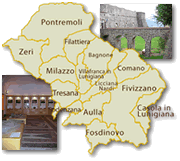
The name of this valley nestled between the Apuane Alps and the sea bears the recollection of the ancient Roman colony of Luni whose territory in antiquity embraced these mountains, famous the their marble quarries. A borderland concerned by the passage of major communication routes, including the medieval Via Francigena and the carriageable Via della Cisa, built by order of the Lorraines, Lunigiana is a region that abounds in historical tokens and natural resources.
In order to expand on one’s knowledge of the numerous arboreal species of the valley, we advise a visit to the Orto Botanico dei Frignoli, located near the town of Fivizzano, about 50 km from Carrara.
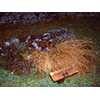
The "Frignoli" Botanical Garden was derived from the nursery of the State Foresters Corps created in 1932. The area measuring some seven hectares, was terraced with dry walls, still existent today. Today’s Garden was inaugurated in 1990, on prevalently provincial property, by initiative of the Comunità Montana and the Museum of Natural History of Lunigiana.
The Botanical Garden is made up of an arboretum with approximately one-hundred species of the Apuane, Apennine and Mediterranean area, and beds reproducing typical terrains of different environments: Apennine (gypsums, red scale, calcareous sandstone), Apuane Alps (marbles and dolomites), and wetlands. The Garden also contains the "herbal plain", characterised by spontaneous herbs collected for food in Lunigiana, and by natural and anthropic woods, derived from the spontaneous growth of plants cultivated in the nursery.
Finally, the Garden has an educational area open to the public; the public relations office supplies guides of the flora, and trekking maps.
(Francesco Marchetti)
Also on the territory of the municipality of Fivizzano, the Old Arlia Mill, recently restored and turned into a museum, is well worth a stop.
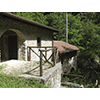
Built in the course of the 19th century and sited on the right bank of the Rosaro stream, the Old Arlia Mill is a specimen of the water-powered mills of Lunigiana once used to grind chestnuts, wheat, maize and the minor cereals cultivated in the underlying valley. The Lunigiana Mountain Community sees to restoring the structure by now reduced to ruins, also reviving its old milling activity.
This water-powered mill with a horizontal wheel consists of three stone millstones (one for chestnuts, one for wheat and one for maize), a shelter for the mules that were used as means of transportation to carry the sacks along tracks, and a warehouse. The former warehouse today houses a permanent exhibition with explanatory panels on the history of Lunigiana mills, such as those in Filattiera and Signano di Fivizzano.
(Cristina Rosselli)
Located 15 km south of Fivizzano, the Equi Spa offers the benefits of modern spa treatments, along with the possibility to take part in interesting excursions to the nearby karstic caves.
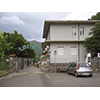
Already known to the Romans, the thermal spring of Equi owes its fortune to the engineer Carlo Tonelli who, in the late 19th and early 20th century, saw its therapeutical potential and decided to exploit it by building a thermal centre. Thus it was that, in 1894, in the vicinity of a picturesque old village, the Equi centre was established. Site of the XX National Conference on Medical Hydrology and Climatology (1929), the thermal centre was managed continuously by the Tonelli family until 1989, the year in which it became the property of the Commune of Fivizzano.
Today the modern thermal baths, thanks to their sulphurous water, continue to cure visitors affected by respiratory and bone and joint disorders, while offering, thanks to their position, the chance to take interesting excursions. One of the most interesting of these is a visit to the nearby karstic zone called "La Buca", in the Apuan Mountains Park, whose caves filled with stalagmites and stalactites attracted the attention of the great naturalist Antonio Vallisneri in the late 18th century.
(Elena Fani)
A mandatory stop to get to know the territory is the Museo di Storia Naturale della Lunigiana in Aulla. Its collections indeed constitute a cross-section of the region’s botanical, zoological and mineralogical patrimony. To get there, turn back towards Fivizzano for about 25 km, and then continue on SS63 and SS62.
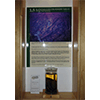
The Museum, instituted in 1981 at the initiative of the Commune of Aulla, is located in the Brunella Fortress, an imposing structure of Renaissance architecture with square layout built in the first half of the 16th century, probably to the design of Antonio da Sangallo the Elder. It has undergone various restoration initiatives, and was reopened in 1997 by the Natour Cooperative, which has managed it since 1984 and which organises its educational activity.
The exhibition, designed to favour dissemination of the natural sciences and knowledge of the naturalist features of the territory, is made up of three collections: botanical, zoological and mineralogical. The notable botanical collection includes, in addition to the Ferrarini herbarium, compiled by Erminio Ferrarini starting in the 1960s and consisting of a collection of rare plants native to the Apuan Alps, core bores of trunks of various arboreal species and a collection of seeds from local plants. A tree trunk for the study of dendrochronology, a method of dating based on studying the growth rings in trees, is also displayed.
The zoological collection is composed of specimens of fauna from the Lunigiana acquired after the founding of the Museum. It includes stuffed mammals, birds, reptiles and amphibians conserved in fluid, as well as an osteological and an entomological collection, with specimens of butterflies and moths.
The mineralogical collection is made up of rocks, they too collected over the Lunigiana territory, starting from the time when the Museum was inaugurated. The specimens are conserved in the natural state, but there are also some specimens that have been smoothed or worked for educational purposes. Fossil fragments of a mastodon's tusk, coming from the Pontremoli area, are also displayed.
From a suspended garden in the Fortress, scenic panoramas of the Lunigiana territory, the Apennines and the Apuan Alps may be admired.
(Francesco Marchetti)
Man’s activity in the valley is instead illustrated by the collection of the Museo Etnografico della Lunigiana in Villafranca, which illustrates farming and shepherding culture on the territory. To get there, continue another 10 km on SS62.
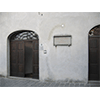
The Museum originated from research activity carried out by the "Manfredo Giuliani" Cultural Association, active in Villafranca from the middle of the 1960s. Open to the public since 1977, it proposes to document the farming and herding life as well as the crafts and popular culture of the Lunigiana territory.
The ethnographic collections, housed in a building complex restored in the years 1988 - 1993, contains implements for work, objects of domestic use, craftsmen's products and household furnishings coming from the Lunigiana territory, dating from the 18th and 19th centuries. The materials, arranged according to work cycles, are displayed in three large thematic sections: farm work, craftsmanship, activities of making or processing products related to the home.
(Francesco Marchetti)
****************************
Texts by Elena Fani
English translation by Victor Beard
Last update 19/feb/2008



 = libraries and archives
= libraries and archives  = scientific research centers
= scientific research centers  = memorial places of scientists
= memorial places of scientists = public health places
= public health places = places of science and worship
= places of science and worship = places of technology
= places of technology  = museums and collections
= museums and collections  = villas and gardens of science
= villas and gardens of science



